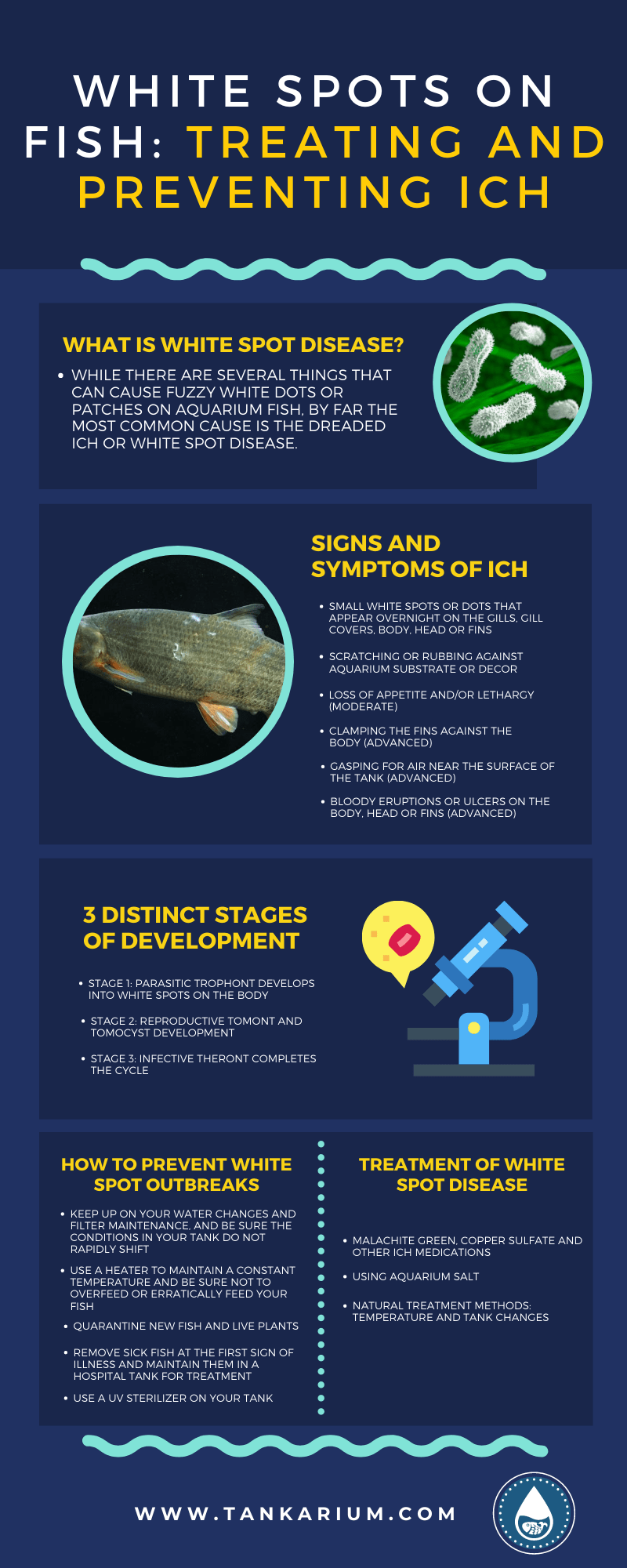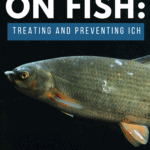It’s never fun to discover a sick fish in your aquarium, but what can you do if you have an outbreak of infectious ich? White spot disease is one of the most common afflictions in freshwater tanks, and most aquarists will experience at least one major flare-up. What causes white spots on fish, and can fish recover from ich?
Guide to White Spot Disease in Fish
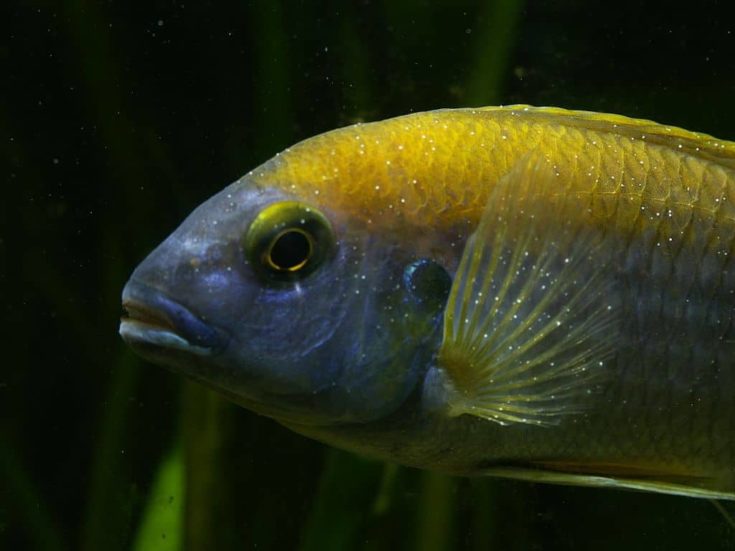
Working at an aquarium shop in college, I was approached nearly every day by customers looking for solutions to their aquatic problems. One of the most common complaints were white spots on tropical fish or goldfish. I always thought white spot disease was aptly termed “ich or ick” because it truly is an icky and tricky problem.
What is White Spot Disease?
While there are several things that can cause fuzzy white dots or patches on aquarium fish, by far the most common cause is the dreaded ich or white spot disease. What is ich, and how long does it take for ich to go away?
Signs and Symptoms of Ich
Ich is a disease caused by an infectious parasite. How do you know if your fish has ich? It isn’t always obvious to the naked eye, and several other infections can mimic white spot disease in the early stages. It’s most likely that your fish have ich if they display the following symptoms:
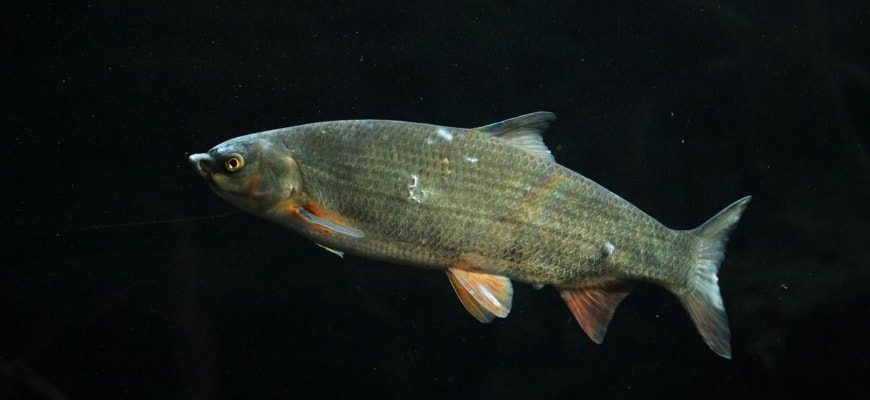
- Small white spots or dots that appear overnight on the gills, gill covers, body, head or fins.
- Scratching or rubbing against aquarium substrate or decor.
- Loss of appetite and/or lethargy (moderate).
- Clamping the fins against the body (advanced).
- Gasping for air near the surface of the tank (advanced).
- Bloody eruptions or ulcers on the body, head or fins (advanced).
Ich is a progressive disease that usually appears suddenly and continues to spread. To add to the challenge, not all sick fish exhibit the distinctive white spots. With mild infections, they may only have parasites hiding in their gills where you can’t see them. You might not notice the subtle signs until other fish get sick.
White Spot Disease: Cause and Prevention
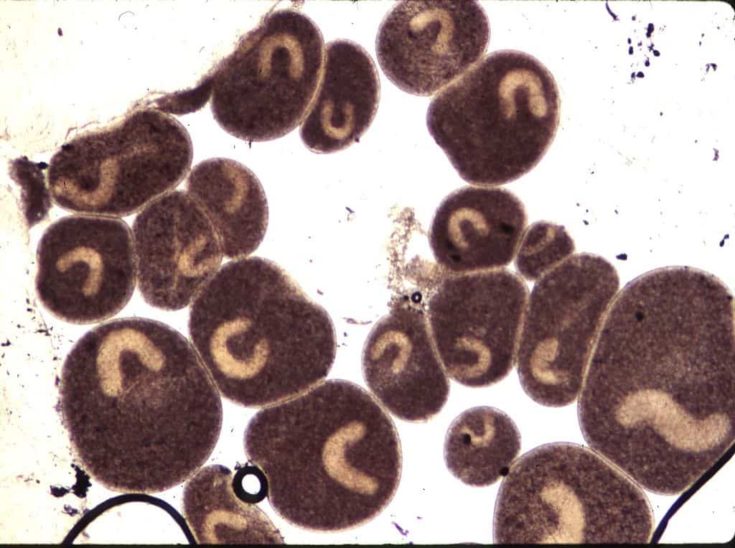
What causes ick? The parasite responsible is a protozoan known as Ichthyophthirius multifiliis, which literally means “the fish louse with many children.” It’s found in freshwater bodies all over the world and is a scourge to wild and farm-raised fish too. Let’s take a detailed look at the ich life cycle.
Lifecycle of the Ich Parasite
The protozoan goes through 3 distinct stages of development. Here’s a few important facts you need to know before you dive into the details of their reproductive cycle:
- It’s hardest to treat the infection in the first stage, when the protozoan is attached to your fish and is encapsulated in their skin.
- If you interrupt its free-swimming stages, you may be able to halt an infection in its tracks.
- This cycle is also temperature-dependent; at 86°F the parasite completes the cycle in about 5 to 7 days, while at 50°F it may take 3 to 4 weeks.
Stage 1: Parasitic Trophont Develops Into White Spots on the Body
When a fish is infected with ich, the parasitic trophont becomes encapsulated in the epithelium or upper layer of the skin. This is what causes the slightly raised white spots on your infected fish. The trophont feeds on your fish’s tissues and causes irritation around the edges of the capsule.
Stage 2: Reproductive Tomont and Tomocyst Development
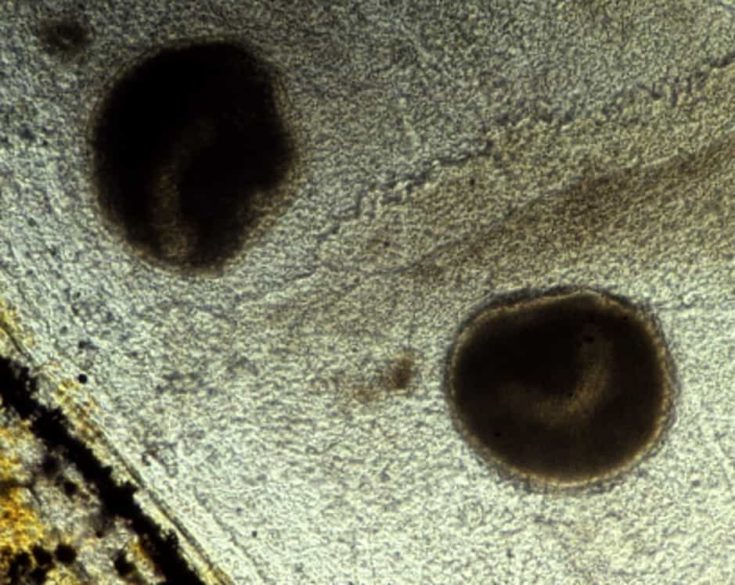
When the trophont reaches the ideal size, the cyst bursts open and the free-swimming tomont emerges into the tank. The tomont eventually attaches itself to the tank, substrate, decorations, or plants and surrounds itself in a protective gelatinous cyst. This tomocyst is where they reproduce.
Inside the tomocyst, mitotic cellular divisions take place and produce the next generation of daughter cells called tomites. Up to 1000 tomites can be produced from a single tomocyst, and when they reach maturity they break out through the cyst wall.
Stage 3: Infective Theront Completes the Cycle
When the mature theronts emerge, they swim through the water searching for an appropriate host. They can rapidly infect any fish in the tank. Theronts can survive for several days in the water, but if they don’t find a host to attach to they can’t continue to reproduce and the cycle is broken.
How to Prevent White Spot Outbreaks
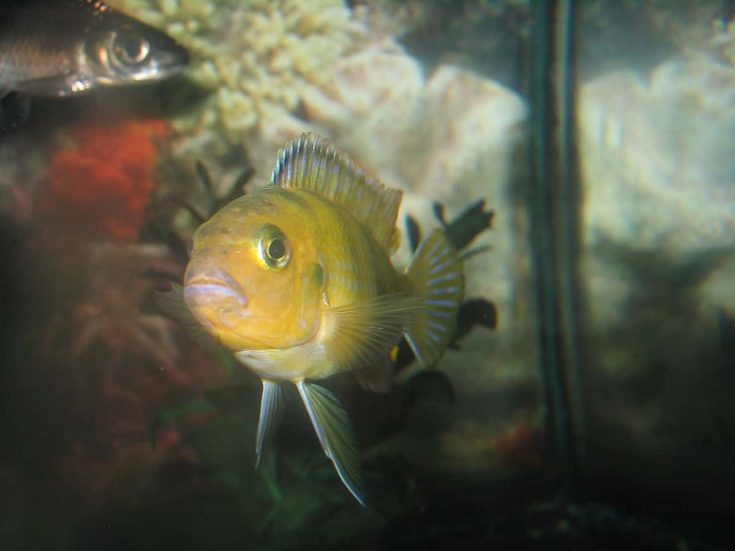
There’s some debate about whether ich is always present in aquarium water, but without a doubt, stress and poor water quality make it much more likely your fish will get sick. If your fish has a hidden infection, they may not show signs until their immune system crashes from stress.
Ich Prevention Tips for Fish Tanks:
- Keep up on your water changes and filter maintenance, and be sure the conditions in your tank do not rapidly shift.
- Unstable water parameters can cause your fish stress, so use a heater to maintain a constant temperature and be sure not to overfeed or erratically feed your fish.
- Quarantine new fish and live plants in a separate tank for 7 to 14 days (or longer for coldwater species) and never place new animals or plants directly in your community aquarium.
- Remove sick fish at the first sign of illness and maintain them in a hospital tank for treatment.
- Use a UV sterilizer on your tank.
Treatment of White Spot Disease
Can fish recover from white spot disease? Ich is a tricky disease, and some fish don’t survive the infection. It depends on how quickly you notice the problem and how much damage the protozoan causes. If a fish survives, however, there’s a good chance they’ll have at least partial immunity to further infections.
Ich treatment is also problematic, because medications cause stress and are highly toxic themselves. An infected fish may develop secondary infections from the ulcers and need antibiotics as well. Let’s take a quick look at the methods used to control white spot disease in aquariums.
Malachite Green, Copper Sulfate and Other Ich Medications
It was once common to treat ich by dosing a tank for 7 to 14 days with a toxic mix of chemicals such as malachite green, copper sulfate or other parasitic medications like formaldehyde, and some aquarists still use these treatments. These meds don’t penetrate into the fish’s skin, but should target the free-swimming stage.
If you opt for treating the whole tank, you’ll need to remove your chemical and biological filter media and perform daily 25% water changes. Be sure to vacuum the gravel to get as many stage 2 and 3 parasites as possible. Alternatively, if you’ve just a fish or two with symptoms, you could use a hospital tank to treat them individually.
Using Aquarium Salt
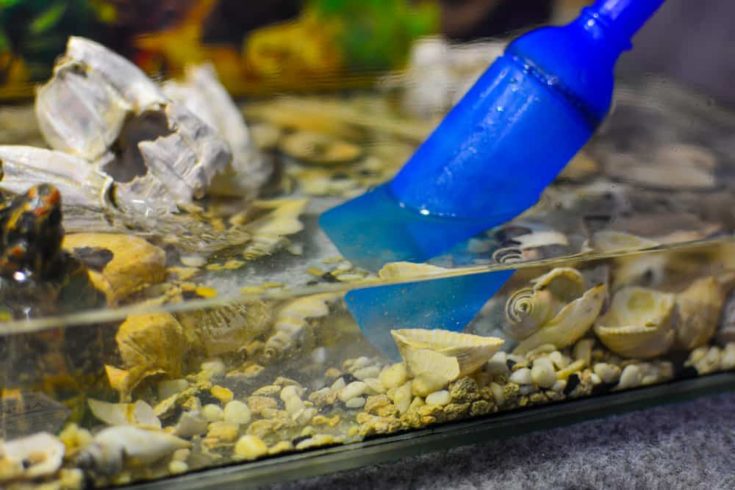
Another method that’s seen some success is using non-iodized aquarium salt to raise the salinity of your water. This may help soothe the itchiness caused by the cysts on your fish and will hopefully kill the free-swimming parasites. You’ll want to remove any filter media and do daily water changes as you treat your fish.
You’ll have to research the ideal salinity for your tank based on the type of animals you’re keeping. Some fish are much more sensitive to saltwater than others and may not be able to handle the ideal dose. You’ll want to maintain the salinity for at least 7 to 14 days.
Natural Treatment Methods: Temperature and Tank Changes
Since the medication and salinity treatments can be stressful and even fatal to some fish and certainly many live plants, some aquarists opt to control an outbreak using safer and more labor-intensive efforts.
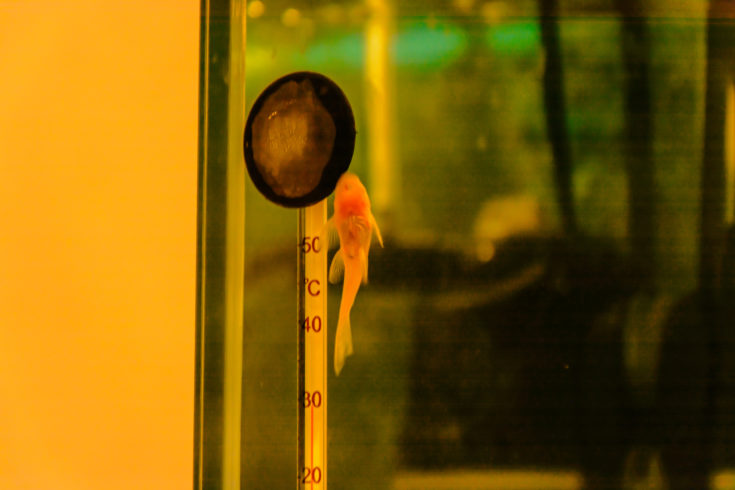
Raising your tank’s temperature can speed up the ich life cycle in a predictable fashion, and it’s advised you raise it gradually as high as your fish can tolerate, even if you’re treating the tank with salt or meds. You’ll want to add an air stone to increase the oxygen in the water, however, since warmer water holds less.
Along with increased temperatures and daily water changes, some aquarists also rotate their fish to a new tank every 5 to 7 days until the infection has disappeared. That way, the free-swimming stage-3 protozoans can’t find a new host and perpetuate the infection. You may lose some sick fish but save the rest of the tank.
Conclusion
Ich is a common but tricky problem in freshwater aquariums, and it’s much easier to prevent than treat. Unfortunately, many treatments cause further stress, and not all fish can survive the infection. Using the information in this guide, though, you can reduce the mortality in your tank and keep the problem from coming back!
